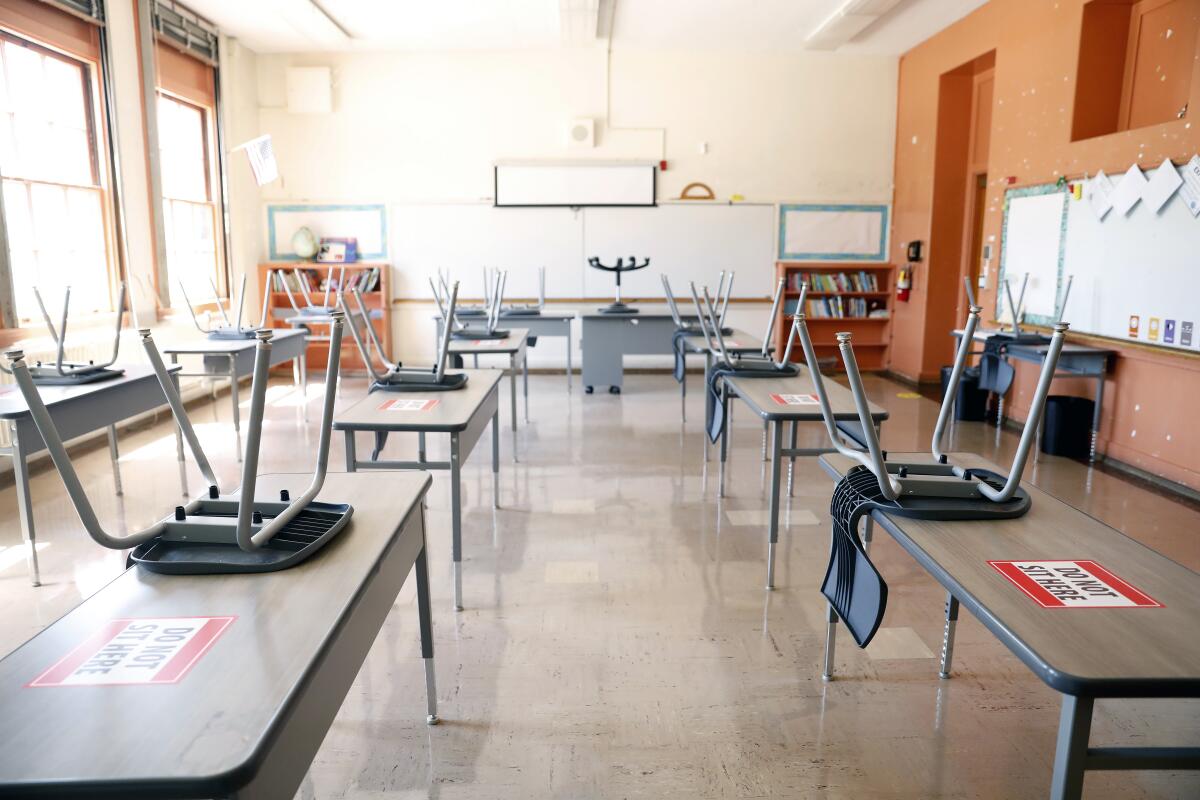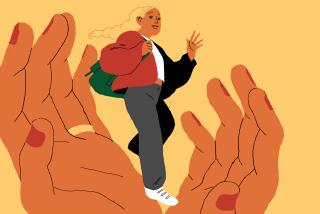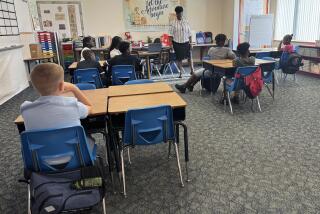Column: How L.A. turned junior high into middle school — and why I can’t wait to be done with it

- Share via
Good riddance, middle school.
Goodbye to mean girls and clueless boys.
Goodbye to casual racism from kids of all colors.
And goodbye (I hope) to never having any homework.
On Tuesday, my 14-year-old niece, who moved in with me 5½ years ago, will graduate from eighth grade. Having raised a daughter who is now 31 and married, I never expected to shepherd a child through the middle school years again — especially not as a single parent.
When my then-8-year-old niece moved in with me in 2019, life as I knew it came to a screeching halt. And when the pandemic hit the next year, life as we all knew it came to a screeching halt.
During the lockdown, my niece and I worked genially at opposite ends of the dining room table in my one-bedroom, post-divorce apartment. Thanks to her 90 minutes a day of Zoom class, I got to repeat fourth grade. Did you know there’s a species of jellyfish that’s immortal?
By the time fifth-grade graduation rolled around, in 2021, kids were back in the classroom, and I was feeling misty-eyed about her move to middle school.
Now I can’t wait for her to move on.
This is no reflection on her school’s teachers or support staff, who have been wonderful, good-humored and patient. (Talking to you, Ms. McNairy, Mr. Bloom and Ms. Benson.) This is purely about the taxing nature of living with a middle schooler.
When I was my niece’s age, the L.A. school system had not yet adopted the concept of middle school. We still had junior high, which went from seventh to ninth grade, followed by high school, 10th to 12th.
That changed in the mid-1980s, when the district came around to the idea, first propounded in the early 1960s, that young adolescents were not well served by the junior high/senior high setup. Junior high, the argument went, was simply a mini-version of high school that did not address the unique needs of adolescents who are neither young children nor fully formed.
Whatever the impulse behind replacing junior highs with middle schools, it really does make sense to corral everyone going through puberty behind the same high fence.
“I really don’t understand how you can stand to be around these kids all day,” I recently told a counselor at my niece’s school. “You really must be crazy.”
“Oh,” she replied smiling, “we are.”
Middle schoolers need space to grapple with social issues that are presumably smoothed out by the time they get to high school. This is where the maddening lack of homework comes in.
“The lack of academic pressure allows kids to be a little more carefree,” said Nancy Geshke, a science teacher at Mark Twain Middle School in Venice. “What’s negative about middle school is just, in general, everyone is a hot mess. If you can not be affected by their mood swings, though, you get some real gems.”
Middle schoolers can be terrible to one another. They have spent a lifetime learning that teasing is bad and bullying is worse, and yet they are unable to control their worst impulses. My niece has come home with stories about being called a “cracker,” about Black kids being told to “get back to work,” about American-born Latino kids being called “illegal.”
Add to their impulsivity the instantaneous communication afforded by cellphones, and you have a pretty toxic mix.
“In sixth grade, they are still babies,” Geshke said. “Seventh grade is the worst of the worst. They don’t know who they are. By the end of eighth grade, they start to find their people, and they rule the school.”
(Indeed. As my niece lamented the other day, “I can’t believe I am going back to the bottom of the food chain.”)
And oh, my God, they are such unreliable narrators.
I was furious when my niece told me that a sixth-grade classmate had been saying really awful things to her. It sounded like serious harassment to me. I didn’t call the counselor with guns blazing, mind you, but I did imply that my niece was being victimized.
The counselor told me very calmly that the girl was saying mean things to my niece because my niece had taken one of the girl’s books and hidden it.
“Did you do that?” I asked her.
“Oh, yeah, I did,” she replied. “I guess I forgot.”
I applaud the approach her middle school has taken to these sorts of squabbles. My niece has spent any number of hours in adult-supervised conflict resolution sessions (thank you, Mr. Chaka) working out issues with her frenemies. “Afterwards, Auntie, we all hugged,” she would say. And peace ruled the middle school — at least until the next fight.
More to Read
A cure for the common opinion
Get thought-provoking perspectives with our weekly newsletter.
You may occasionally receive promotional content from the Los Angeles Times.











